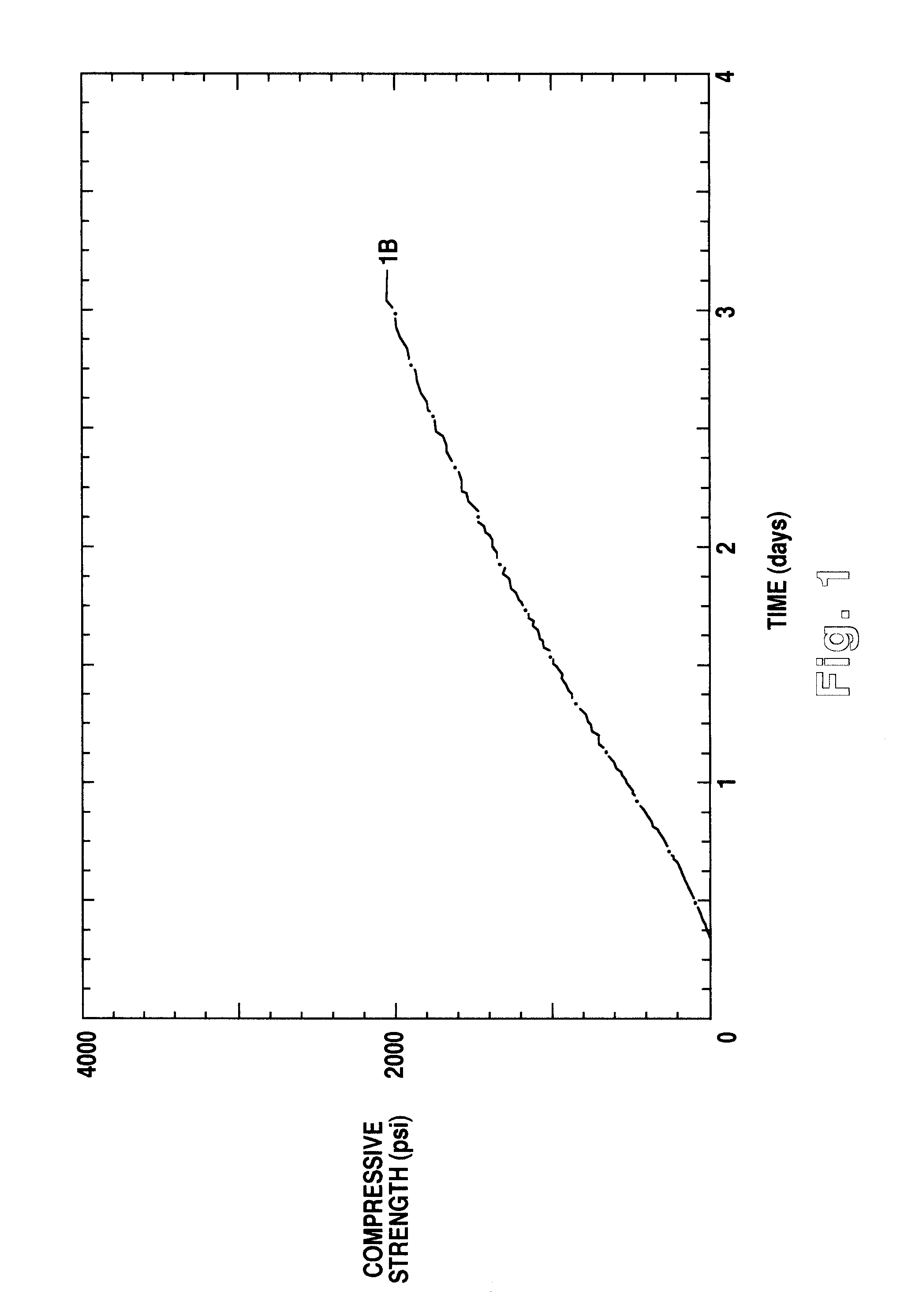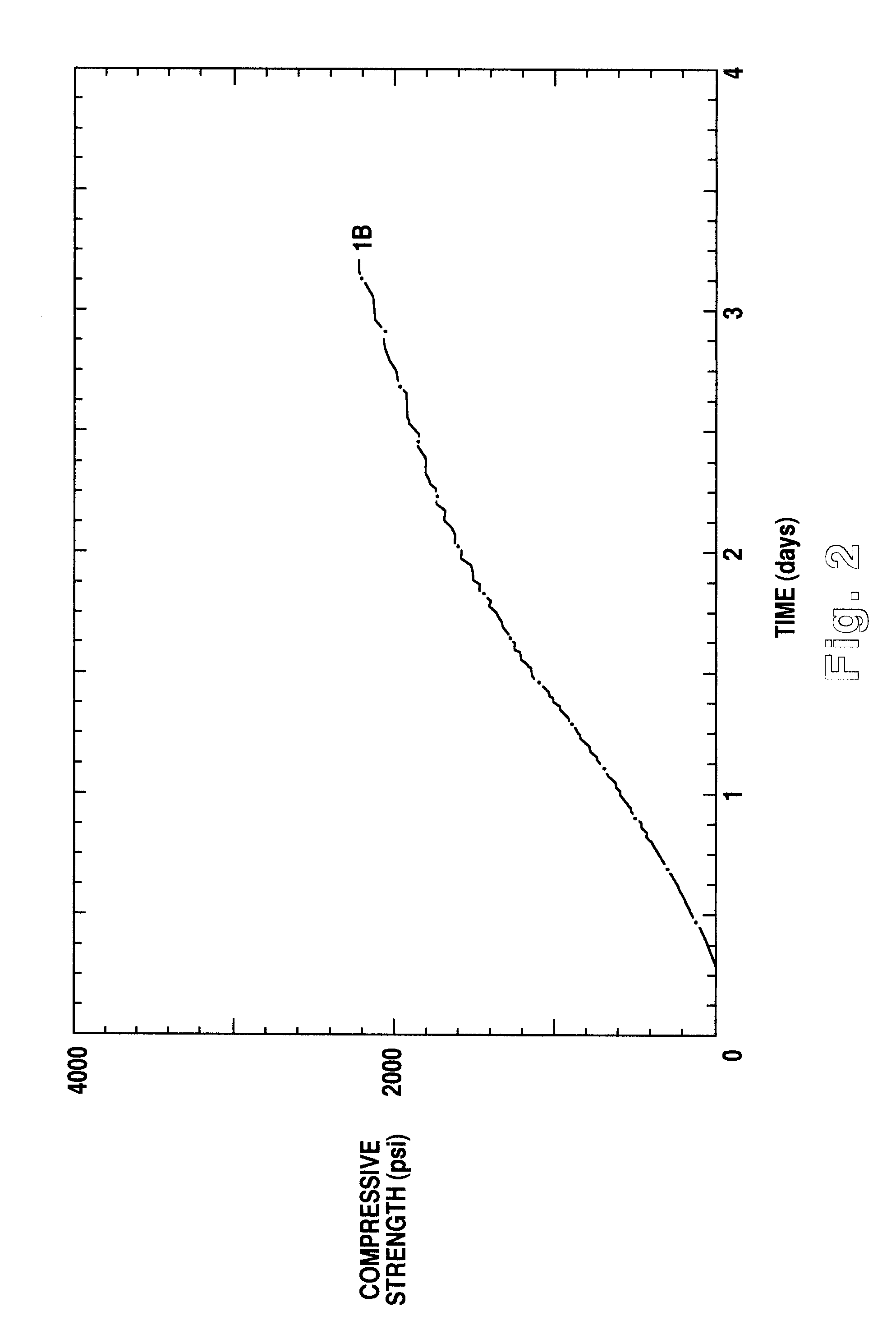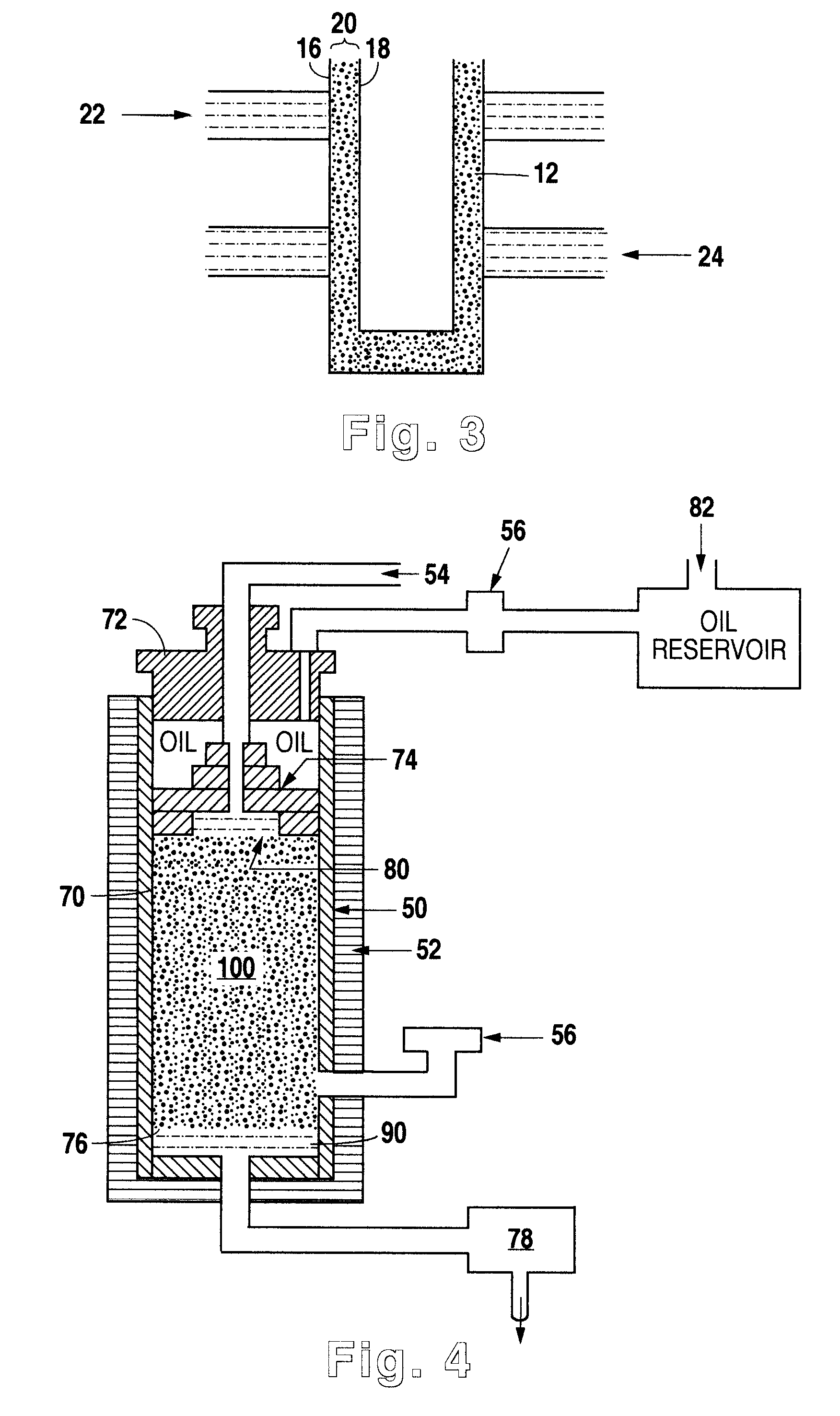Methods and compositions for use in cementing in cold environments
a technology of compositions and cementing, applied in the direction of sealing/packing, chemistry apparatus and processes, wellbore/well accessories, etc., can solve the problems of poor wellbore isolation, costly delays, and increased problems
- Summary
- Abstract
- Description
- Claims
- Application Information
AI Technical Summary
Problems solved by technology
Method used
Image
Examples
example 1
In the following example, one embodiment of an aluminum silicate-containing cement slurry was tested and compared to a conventional gypsum-containing cementing system. Characteristics of the conventional gypsum slurry (Slurry #1) and a slurry embodiment employing aluminum silicate (Slurry #2) are presented in Tables 1 and 2. Components of the a slurry systems are listed in Table 1. Slurry properties, testing conditions, and compressive strength information is presented in Table 2.
TABLE 2
FIG. 1 and FIG. 2 show the development of compressive strength over time (during curing) for Slurry #1 and Slurry #2, respectively. Compressive strength was measured at 3000 psi and 50.degree. F. using an ultrasonic cement analyzer. As can be seen in Table 2, Slurry #2 which includes aluminum silicate according to one of the disclosed embodiments, and methods shows faster development of compressive strength over conventional Slurry #1 which includes gypsum. For example, Slurry #2 develops a compressi...
example 2
In Example 2, a conventional foamed cement slurry (Slurry #1) was compared to one embodiment of a foamed aluminum silicate-containing cement slurry (Slurry #2). Components of Slurry #1 and Slurry #2 are given in Table 3, and slurry properties, testing conditions, and compressive strength information are given in Table 4.
TABLE 4
The results of Example 2 show that foamed aluminum silicate-containing cement Slurry #2 gives a 90% increase in early compressive strength development over conventional foamed cement Slurry #1 while, at the same time, offering a thickening time that is slightly greater than the thickening time of Slurry #1.
examples 3
Aluminum Silicate-Containing Cements For Gas Intrusion Control
Gas flow model curves and thickening time test data were determined for embodiments of the disclosed method using cement slurries prepared for gas intrusion control.
For Examples 3-8, a gas flow model was constructed to simulate a typical well configuration in which a cement slurry is exposed to its own hydrostatic pressure, a pressurized gas formation, and a lower pressure permeable zone, such as the situation illustrated in FIG. 3. A simplified schematic of the gas flow model is shown in FIG. 4. The gas flow model consisted of test cell 50, heating jacket 52, pressurized nitrogen gas source 54, pressure transducers 56, and (not shown) load cells, a linear variable differential transducer ("LVDT"), a data acquisition unit ("DAU"), and a computer. The test cell 50 consisted of test cylinder 70, top head assembly 72, floating piston 74, bottom assembly 76 and back pressure regulator 78.
For each example, the floating piston ...
PUM
| Property | Measurement | Unit |
|---|---|---|
| compressive strength | aaaaa | aaaaa |
| density | aaaaa | aaaaa |
| temperature | aaaaa | aaaaa |
Abstract
Description
Claims
Application Information
 Login to View More
Login to View More - R&D
- Intellectual Property
- Life Sciences
- Materials
- Tech Scout
- Unparalleled Data Quality
- Higher Quality Content
- 60% Fewer Hallucinations
Browse by: Latest US Patents, China's latest patents, Technical Efficacy Thesaurus, Application Domain, Technology Topic, Popular Technical Reports.
© 2025 PatSnap. All rights reserved.Legal|Privacy policy|Modern Slavery Act Transparency Statement|Sitemap|About US| Contact US: help@patsnap.com



